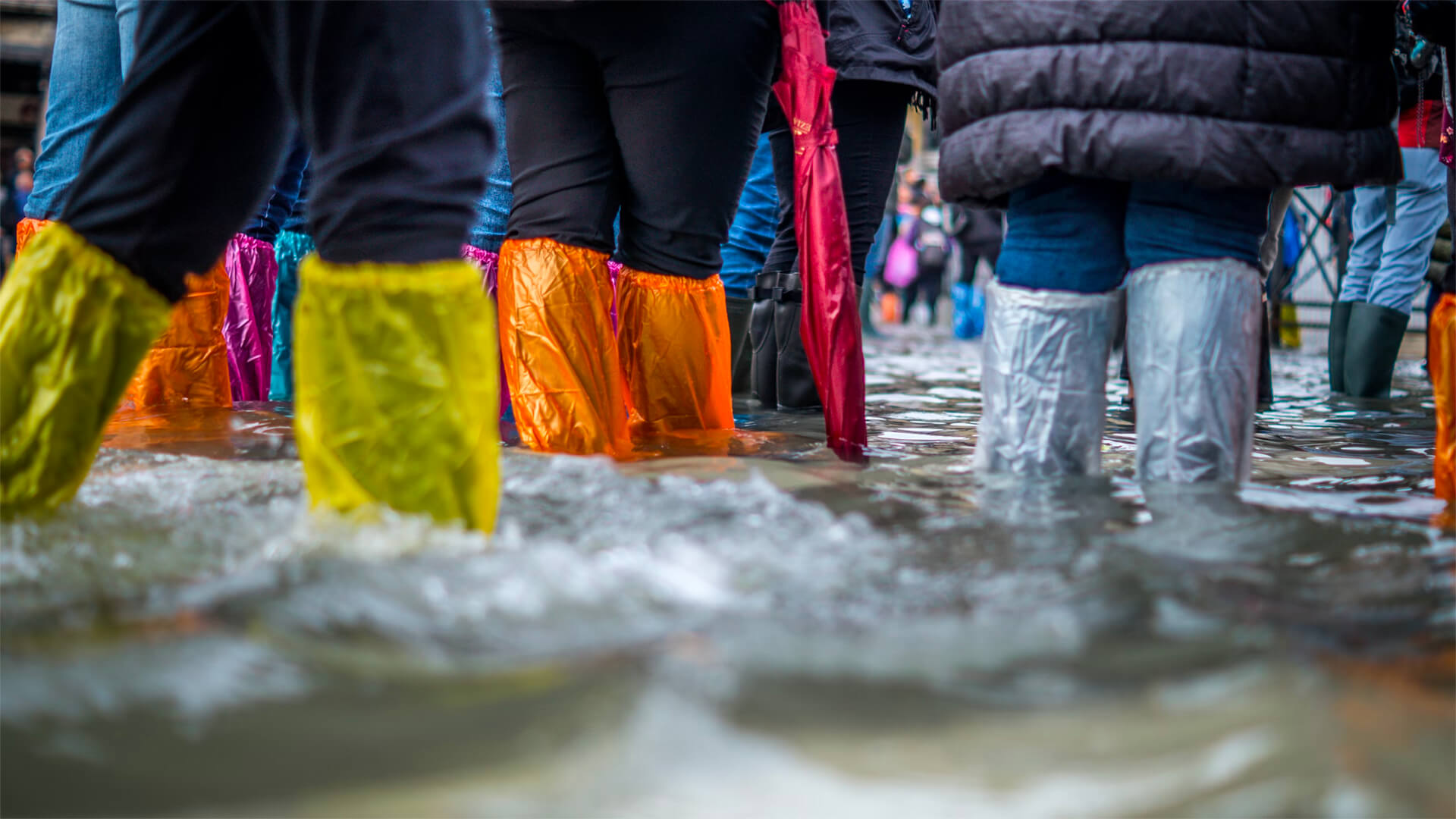If you’re thinking, “There’s no way China’s situation could possibly get worse,” you may need to talk to mother nature about the rains and typhoons causing flooding in northern China.
To understand the problem, we need to rewind about 2500 years. The Chinese crop of choice was and still is rice (although corn and wheat would have been quite productive given the Yellow River’s sediment makeup and the region’s arid climate). To produce rice, you must precisely control when and how much water is introduced throughout the growth cycle.
They needed extensive government oversight and the physical infrastructure to control the flows of a river as big as the Yellow. This meant that the Chinese needed to develop a dike system. Fast forward to the present day, and you’ll see a system of massive and unfinished dikes throughout northern China.
This dike system prevents the silt and sediment from the Yellow River from spreading and dispersing naturally, which means it has had over two millennia to build up. As the Yellow River takes on water from the extensive rains and seasonal typhoons, these dikes are being pushed to their limits.
I’m not saying they will break this year, but it’s only a matter of time before they do. When that happens, you can expect catastrophic flooding that will destroy critical infrastructure and many people. But hey, that still doesn’t top the list of things China should be worrying about.
Prefer to read the transcript of the video? Click here
Here at Zeihan On Geopolitics we select a single charity to sponsor. We have two criteria:
First, we look across the world and use our skill sets to identify where the needs are most acute. Second, we look for an institution with preexisting networks for both materials gathering and aid distribution. That way we know every cent of our donation is not simply going directly to where help is needed most, but our donations serve as a force multiplier for a system already in existence. Then we give what we can.
Today, our chosen charity is a group called Medshare, which provides emergency medical services to communities in need, with a very heavy emphasis on locations facing acute crises. Medshare operates right in the thick of it. Until future notice, every cent we earn from every book we sell in every format through every retailer is going to Medshare’s Ukraine fund.
And then there’s you.
Our newsletters and videologues are not only free, they will always be free. We also will never share your contact information with anyone. All we ask is that if you find one of our releases in any way useful, that you make a donation to Medshare. Over one third of Ukraine’s pre-war population has either been forced from their homes, kidnapped and shipped to Russia, or is trying to survive in occupied lands. This is our way to help who we can. Please, join us.
Transcript
Hey everybody. Peter Zeihan here coming to you from the Golden Banner trail above Cannes Coral, which is a suburb of the Denver Metroplex. Today, we’re going to talk about water or specifically all the water that northern China has gotten of late, that heavy spring and summer rains. And they just got hit by a typhoon. And so there’s significant flooding through Beijing.
It’s already killed a few dozen people.
The key thing to remember about China is a lot of its government structures are a direct outcome of its geography. So the North China plain, where the Han ethnicity basically has its core of power, is a big, wide open area that is both drought and flood prone. The drought is normal climatic stuff. This is a semi-arid region, maybe roughly akin to a cooler version of Central Texas or maybe central Nebraska.
But instead of having kind of braided rivers that flow through it, it’s got one single mighty river, the yellow that originates significantly upstream. A couple thousand miles away that drains an absolutely massive watershed in an area that is soil type called the West, which is wind driven soils, very fine particulates. And that means with when this dry zone, a lot of it’s actually desert does get rain, most of it runs off, it carries a lot of silt with it.
And that’s why the Yellow River has its name. The salt is yellow by the time you get downstream to where everyone lives in the North China plain, it’s a raging torrent, but it’s a raging torrent with lots and lots and lots of sediment. Now, if you can capture that sentiment and kind of like the flood drive that you had in, say, Egypt or the American Midwest, you get incredibly productive farmland.
But that requires you growing things like corn, wheat and the rest. China’s rice country. Water management is very important. Rice has to have very specific watering conditions at every stage of its production. Otherwise, the crop is lost. Now, northern China, they don’t grow rice anymore. But after 2500 years of growing rice, that has set certain things into motion.
Specifically, they have to be able to control the river, otherwise the water will come or be not there at the time of its choosing, rather than the Chinese people’s choosing. And that requires a lot more organization at the state level, which tends to generate a stronger hand in terms of government and a requirement that you have everybody under a single house politically.
Otherwise, various factions will just attack the water works and destroy whatever the hostile power happens to be. Fast forward that 2500 years, wrestling the river into shape means basically building ginormous dikes down the entirety of its length for the entirety of civilized northern China. That means the silt has nowhere to go. So in the Midwest, one of the problems that we’ve seen after just 150 years of trying to do this strategy on the Mississippi is you get silt on the bottom of the riverbed.
That raises the level of water so that when one of those dikes does break, it floods an entire area. So a big thing that the Army Corps of Engineers have been doing over the last decade is leveling some of those dikes and turning some of the land to wetlands just to absorb the flood flows. This is at least two orders of magnitude more significant, the case of China, because you’re talking about the most dense human population footprint in the country.
And we’re going to rotate a little since you like this, so much so that shot over there or there. That is Red Rocks, Ampitheater. So if you ever want to see a good show in Denver, go there. I got a great view of downtown, the sunsets. Anyway, what this means now is that in China, you’ve got two and a half millennia of sediment.
And so every time there’s a flood, it threatens the entire dike system. And if you have a break somewhere, it’s much more big of a problem than you have in Mississippi, because after two and a half millennia of heavy sediment, the floor of the river, in many cases now above the ground level, surprising of the surrounding lands, meaning those dikes are two, maybe even three stories above the city’s.
And if they break the entire course of the river, you know, river goes by the path of least resistance crashes down into the populated zones. Now, that hasn’t happened this year. I’m not saying it’s going to. I’m saying that the Chinese really didn’t finish their dike system to the current level of absurdity until just about ten, 15 years ago.
They used to have floods regularly. They would kill hundreds of thousands of people. And in today’s environment, where the Chinese were facing every possible problem under the sun with their finance, their economy and their demographics, this is just one more thing you have to factor in, because when this breaks and physics tells us in time it will, they’re going to lose significant portions of some of their most advanced infrastructure, not to mention lots and lots and lots of people.
So whenever you see it raining West of Beijing, pay attention because it matters a very great deal. All right. Take care.








